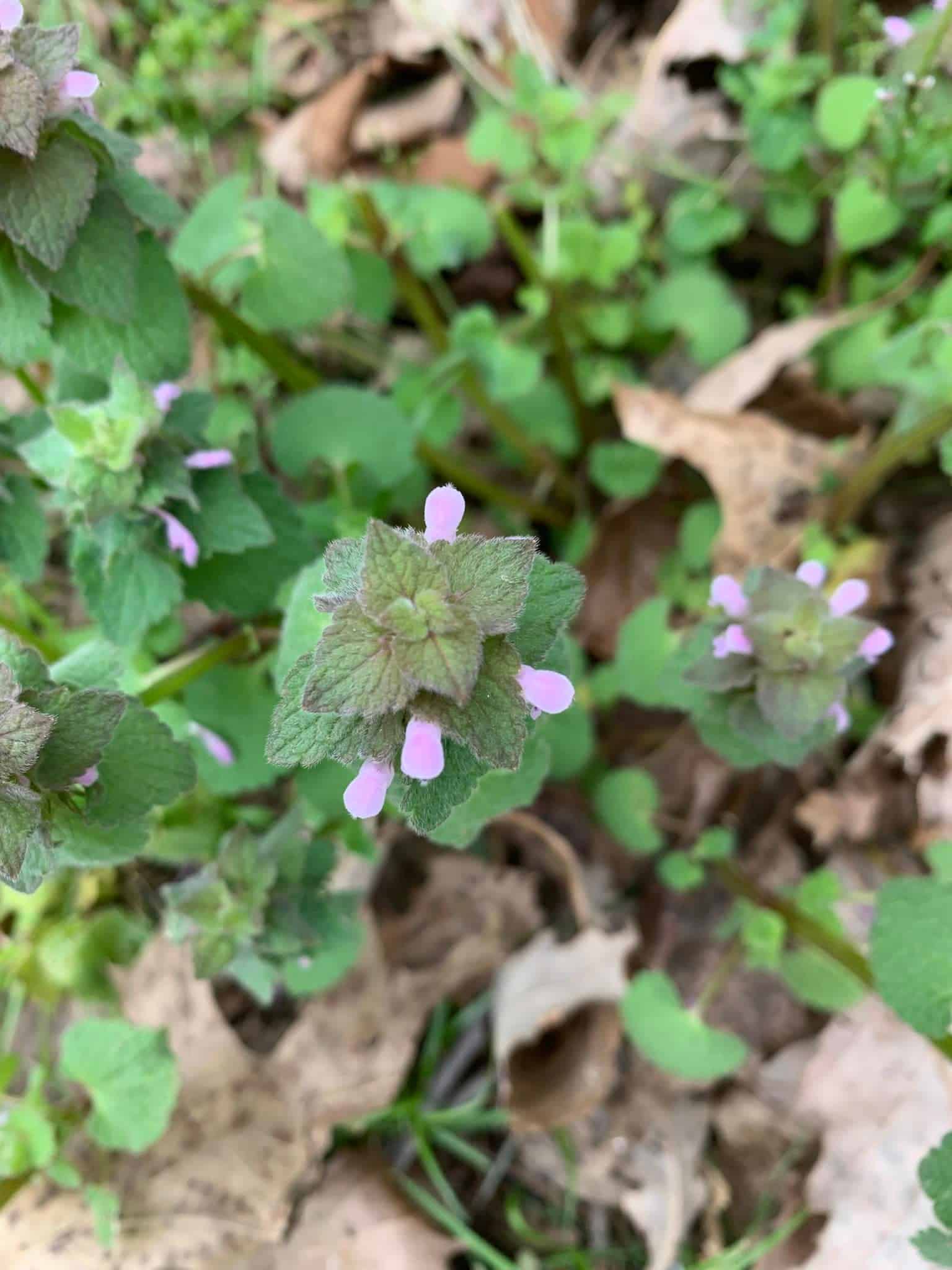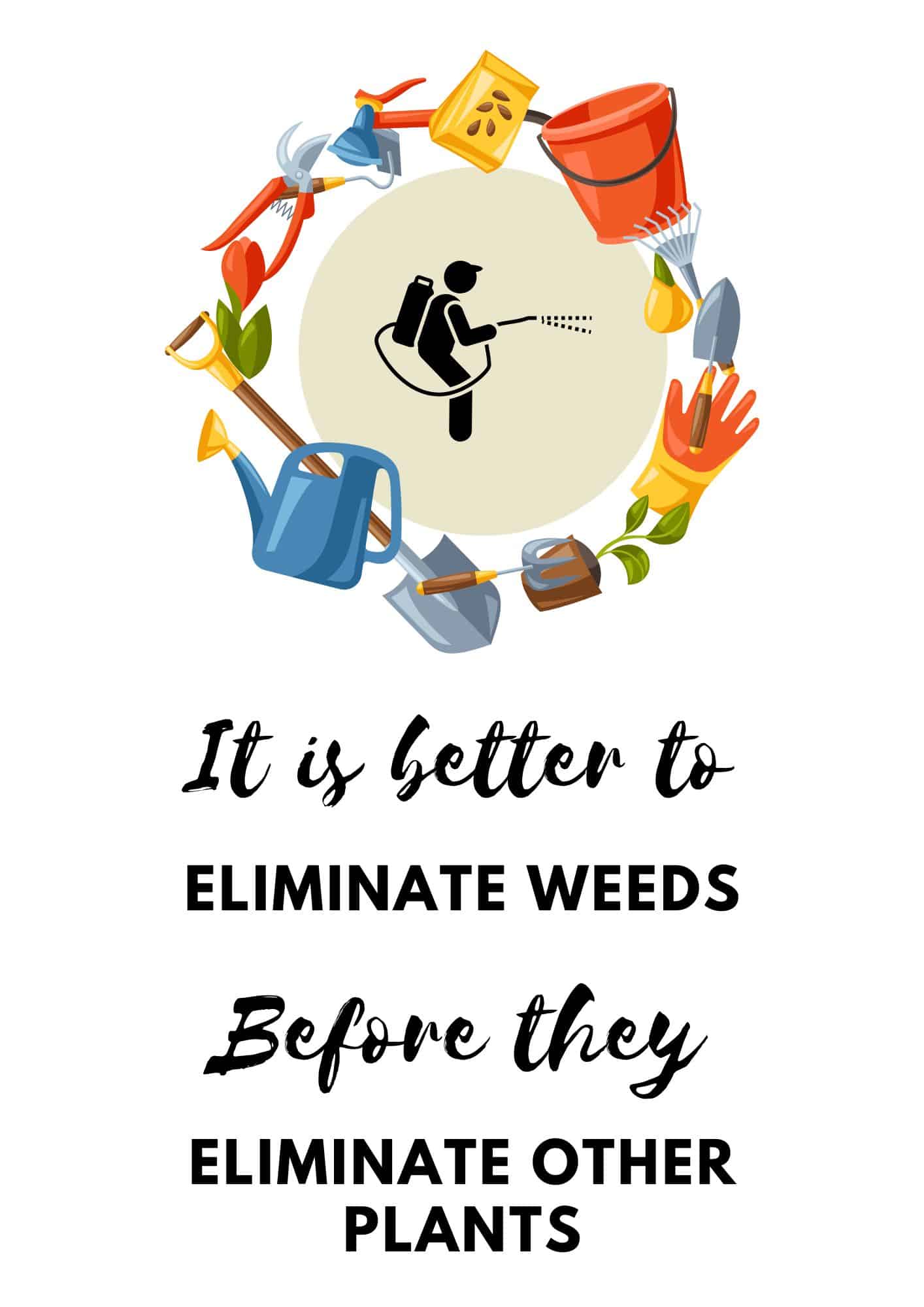Many weeds with purple flowers are from the mint family, which expel a pungent odor when crushed.
Weeds possess several medical properties and some toxicity, so identify some popular weeds in this article.
Table of Contents Show
10 Common Weeds With Purple Flowers
Purple flowers like Verbena and Lilacs are known worldwide for their enthralling beauty.
Weeds do not require much of your attention, and getting pretty purple flowers out of them, is a bonus.
So, look at ten common weeds with purple flowers in great detail.
| Weeds with Flowers | Blooming Season |
|---|---|
| Purple Dead Nettle | Late Spring |
| Henbit | Late Winter and Sometimes Fall |
| Ground Ivy | Early Spring to Early Summer |
| Forget-me-not | Mid Spring |
| Selfheal | Early Summer |
| Wild Violet | Early Spring |
| Black Nightshade | Summer or Early Fall |
| Common Thistle | Mid-Summer |
| Nodding Thistle | Late Summer to Early Fall |
| Creeping Thistle | Summer |
1. Purple Dead Nettle
Purple Dead Nettle produces tubular, small, light purple flowers that grow in clusters.

It is a fast-growing plant that can show its invasive side in your garden. Their leaves give a reddish-purple tinge, the top petioles are short, and the bottom petioles are long.
It can grow 6-9 inches tall and more than 10 inches wide.
People also grow Purple Dead Nettle for the benefits it provides.
- It provides anti-bacterial, anti-fungal, and anti-inflammatory properties.
- This plant contains many nutrients like iron, fiber, vitamins (C, K, A), etc.
- The Quercetin available in Purple Dead Nettle is very beneficial for boosting immunity.
- It is good in fighting against free radicals.
- If you have allergies, this plant can be just the right for you.
- This plant contains compounds that are beneficial against kidney stones.
People usually consume Purple Dead Nettle raw or by sprinkling it in salads.
2. Henbit
This invasive weed belongs to the mint family and develops blooms to signify the forthcoming spring season.
With prostrate growth habit, the Henbit stem lay along the ground, and the toothed green leaves turned upwards.
This plant can grow up to the staggering size of 16 inches tall.
Henbit plant not only produces beautiful flowers but also has a lot of benefits.
- It is best if you are looking to lose some weight, as this weed is low in calories.
- This plant is a good source of fiber, vitamins, and minerals.
- Henbit can help treat fever and joint aches.
- People also drink Henbit smoothies to aid in indigestion and help in boosting energy.
- This plant also contains stimulants and excitants, which can relieve stress and anxiety.
3. Forget-me-not
Like its name, Forget-me-not is a weed that won’t let you forget its beautiful purple flowers.
These invasive plants are easy to grow and care for with a medium growth rate.
The hairy stems on this plant can grow up to the height of 1 foot, and the plant can spread up to 1 foot.
People believe this plant helps treat lung problems and nosebleeds.
4. Ground Ivy
Ground Ivy is a creeping plant from the mint family, lives up to its namesake, and is as fancy as it sounds.
They have a prostrate, spreading growth habit, and their stems are square.
Ground Ivy has a fairly fast growth rate and can grow up to the size of 7 feet in about a year.
This interesting plant provides the following benefits.
- Ground Ivy is effective against many problems like sunburn, cough, arthritis, rheumatism, tinnitus, diarrhea, stomach problems, etc.
- It contains chemicals that reduce inflammation and also work as an astringent.
- This plant can also be directly applied to the skin to treat wounds.
If you are pregnant or have kidney disease, liver disease, epilepsy, and other seizure conditions, you must abstain from taking Ground Ivy in any form.
5. Selfheal
Given the strange name, people have been using Selfheal to treat injuries like sore throat for ages.
Aside from its medicinal value, its flowers are also a treat to watch.
The small purple flowers of Selfheal grow in dense, ovoid clusters on top of the plant’s stem.

As a slow and low-growing plant, it can grow up to 1-2 feet tall if grown undisturbed.
Selfheal has ‘heal’ in its name, and true to its namesake, it has a load of benefits.
- It contains tannins that help reduce skin inflammation.
- This plant is also effective against bruises, stomach aches, rheumatoid arthritis, internal bleeding, HIV/AIDS, gynecological disorders, etc.
6. Wild Violet
These low-growing, self-seeding weeds can be invasive and have divided opinions among plant parents.
Some see these plants as beautiful blooms-producing plants, while for some, it is just invasive weed.
It can spread into 4 inches in height and 6 inches in width.
Integrative Family Medicine proves the following benefits.
- The leaves of this plant are deemed effective against bronchitis, and the leaf syrup is effective against children’s cough.
- Salicylic acid present in this plant can be useful during headaches.
- This plane can treat inflammations, irritations, and swelling if used externally.
- It has antimicrobial properties and is also helpful in promoting healthy lymphatic functions.
- Women can use the plant’s leaves-infused oil and massage their breasts to maintain breast health.
- This plant is also a treasure in vitamins A and C.
You can add leaves and flowers of Wild Violet to your salad to increase its flavor and fragrance.
7. Black Nightshade
Did you know? Black Nightshade is a weed that releases a musk-like smell when the plant wilts.
Black Nightshades reproduce by seeds; one plant can produce about 5000 seeds.
They have hairy stems, and the plant can grow up to 3 feet tall.
In humans, Black Nightshade can cause nausea and vomiting in low dosages. However, if the dosage is high, it may lead to poisoning and, eventually, death.
8. Common Thistle
True to their namesake, Common Thistles are common in most parts of the world. They have beautiful flowers but are too invasive, sometimes sprawling out of control.
Common Thistle has aggressive growth and can grow up to 10 feet in a growing season.
Their leaves are rosette and have sharp spines on the edges. The plant forms leave in the first year and grow flowering stems in the second.
This plant has a lot of benefits to offer. Some of them are as follows.
- The roots of the common Thistle can be used to reduce inflammation after boiling them in water.
- People have also been using herbal steam of the whole plant to treat rheumatic joints.
- You can also use the decoction of the common Thistle and apply it externally or internally to treat bleeding piles.
9. Nodding Thistle
The Nodding Thistle gets its name from its growth habit in which its flowering stems ‘nod’ due to the weight of the big flowers.
The annual variety of these plants flowers in a year, while the biennial does the same in 2 years.
Nodding Thistles only reproduce by seeds and are one of the most invasive plants, thanks to their arsenal of seeds.
This aggressive plant can grow to 6 feet tall when the conditions suit them.
People also use the soft hair of these plants to make paper and the plant’s seeds to make oil.
10. Creeping Thistle
Also known as ‘Canada Thistle,’ creeping Thistle is a herb with lateral root growth; hence the name ‘creeping.’
Creeping Thistle produces spiny flowers in clusters that grow in bracts without spines.

The roots of this plant can grow extensively and aggressively.
If you do not maintain this weed occasionally, it will have thousands of stems, as it can be as wide as 10 feet in a growing season.
This plant has beautiful flowers and a lot of medicinal benefits to offer.
- Creeping Thistle plant roots and leaves prevent and treat inflammation in the body.
- People with toothache chew on this plant to alleviate their pain.
- If you boil the roots and make your children consume the water, it may help to eradicate the worms in the intestine.
- Mix the paste of this plant’s leaves and the leaves of Amaranthus spinosus, and use them to treat indigestion.
However, overconsuming leaves will lead to inflammation and irritation.
How do You Get Rid of Purple Weed Flowers?
Giant Hogweed is highly active in causing skin irritation, burns, itching, and blindness when coming in contact.
Weeds are also competitive for water and nutrients, which can hamper the growth of other nearby plants.
So, you must know by now that weeds can be dangerous. To get rid of the flowers, you may need to remove the weed as a whole.
If you are considering cutting the weeds to get rid of them, that may not be a solution, as it will not remove the roots.
The weeds’ seeds are deeply buried in the ground. So, do not randomly disturb your garden soil.
- Check your garden regularly for the signs of weeds, and chop off the heads as soon as you see them.
- Water the plant according to the plant’s needs, not the weed’s needs.
- Cut off any light supply to the weeds by mulching the topsoil.

- When the weeds are in their juvenile stage and have not grown much, you can pluck them off with your hand.
- To get rid of one of the most invasive weeds, Purple Deadnettle, remove the weed by hand before they produce seeds.
You need to use chemical treatment as the last option to remove the weeds.
Wrapping Up
Weeds with Purple flowers can also help break soil compaction, act as mulch and prevent soil erosion.
But don’t forget about weeds’ toxicity and side effects before growing them.
If you find other weeds missing from the list, take your smartphone and identify other weed plants through Google Lens.


